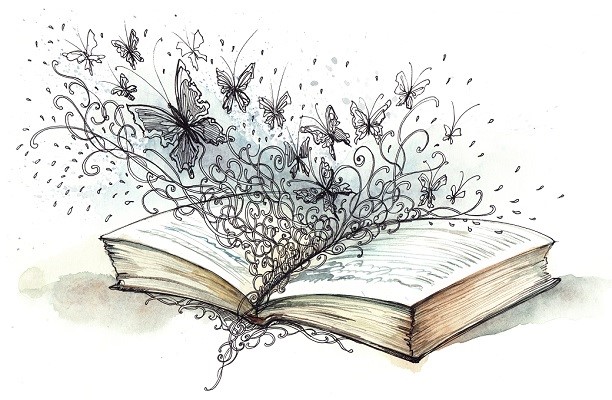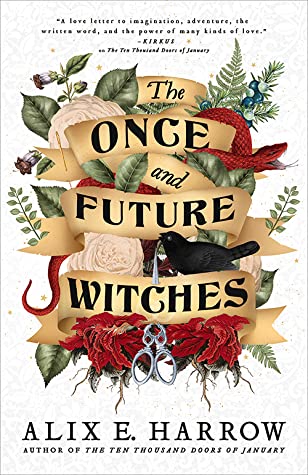
Title: The Four Winds
Author: Kristin Hannah
Publisher: St. Martin’s Press
Publication date: February 2, 2021
Length: 464 pages
Genre: Historical fiction
Source: Review copy courtesy of the publisher via Netgalley
Rating:
From the #1 New York Times bestselling author of The Nightingale and The Great Alone comes an epic novel of love and heroism and hope, set against the backdrop of one of America’s most defining eras—the Great Depression.
Texas, 1934. Millions are out of work and a drought has broken the Great Plains. Farmers are fighting to keep their land and their livelihoods as the crops are failing, the water is drying up, and dust threatens to bury them all. One of the darkest periods of the Great Depression, the Dust Bowl era, has arrived with a vengeance.
In this uncertain and dangerous time, Elsa Martinelli—like so many of her neighbors—must make an agonizing choice: fight for the land she loves or go west, to California, in search of a better life. The Four Winds is an indelible portrait of America and the American Dream, as seen through the eyes of one indomitable woman whose courage and sacrifice will come to define a generation.
The Four Winds is a powerful, dramatic, and heart-breaking book set during the Great Depression, with an incredibly strong and memorable woman as its lead character and emotional core.
Elsa is the oldest daughter of a wealthy Texas family when we first meet her in 1921. At age 25, she’s considered a spinster. For reasons that are impossible to fathom, her parents have treated her as someone unworthy of love all her life. Their scorn and dismissal have led to Elsa’s internalization of their cruelty — she sees her self as unattractive and uninteresting. Despite her love of reading and interest in education, her parents won’t even consider her request to attend college.
Elsa is doomed to a solitary life, until one day, a rebellious moment leads her to venture out in a pretty dress to go to a speakeasy, and she meets a young man, Rafe, whose interest will change her life. When Elsa’s parents realize that she’s pregnant, they force her to pack a suitcase and drive her to Rafe’s parents’ farm, where they drop her on their doorstep and never look back.
Against all odds, it’s here that Elsa truly finds love and purpose in life — not with her unexpected husband, but in his family’s home. Suddenly, Elsa has family and a place, and learns to embrace the farm, the household, the culture, and the people. Her devotion to her new family only grows once she gives birth to her daughter Loreda. She’s determined to raise her children with love and with a connection to the land, their heritage.
Tragically, the happiness on the farm is not to last. The Dust Bowl years descend, with their punishing drought and horrific dust storms, and Elsa and the Martinellis, like all of their neighbors, are helpless and powerless in the face of this disaster. Over the years, they watch their crops fail, their lands dry up, their livestock starve and die. Many pack up and leave, lured by the promise of opportunity and jobs in California. The Martinellis vow never to leave, but this changes once the children’s health is threatened by the lack of food and the damage caused by constantly breathing in dirt and dust.
Ultimately, Elsa has no choice but to take her children and head west in pursuit of a new, healthier life. At first glance, it looks like they’ve found the promised land. As they drive into California, they see field after field of crops growing, green and healthy. But the dream is elusive for migrants. Overwhelmed by the flood of displaced people from the Dust Bowl states, California wants to shut its borders to “Okies”, and treats the newcomers as little more than vermin.
Elsa and her children learn that they’ve left one type of hell for another. There’s no place to live except in squatters’ camps, amid mud and filth, and no work available except toiling in the fields for minimal pay in terrible conditions. There are more workers than work, so they quickly learn to keep quiet and accept whatever comes their way, because the alternative is to starve.
The cruelty of the treatment of migrants is horrible to read about. Hospitals won’t treat them, even in life-threatening emergencies. They’re not wanted in schools, and are told to keep to their own kind. State relief is only available after living in the state for a year, but even then, the big farmers put pressure on the state to cut off relief to anyone who’s able to “pick” — if they can work, they should be in the fields.
When Elsa gets a lucky break and is able to move her family into a cabin on a growers’ land, it’s finally a roof over their heads, but with strings. To keep the cabin, they have to stay put, but there’s no work until the cotton is ready to pick. If they leave to pick elsewhere, they give up their home and have to go back to squatting. To stay, they get credit at the company store for rent, supplies, and food. The only way to pay back the credit is through picking — even when relief payments come through and Elsa has cash in hand, she can’t use it to get out of debt, since the company store doesn’t allow payment in cash.
Over the years, we witness Elsa’s determination to protect her children and provide for them. Midway through the book, as Loreda enters her teens, she also becomes a point-of-view character, and we have the opportunity to see Elsa through her daughter’s eyes. The mother-daughter relationship isn’t easy, but the love between them is always real and palpable.
Reading The Four Winds repeatedly brought me to tears. Through her evocative writing, Kristin Hannah makes us feel the sorrow and hopelessness of the characters, the desperation to provide a better life for their children, the despair each time a new degradation is revealed. The pain of the Martinelli family is visceral, as they face trauma after trauma.
Still, it’s impossible not to admire Elsa’s courage. She doesn’t give up, because she can’t. Her purpose is to keep her children alive and healthy, and to make sure that some day, they’ll have better opportunities. Eventually, her devotion to her children leads her into the world of social activism and the fight for workers’ rights, but it’s her love of family that drives her into acts of defiance and bravery.
The Four Winds is a beautiful and tragic book about a time in American history that’s not as distant as it might seem. Sadly, the attitudes and prejudices toward the migrant families are all too familiar — it’s the haves versus the have-nots, the consolidation of power by denying others, the lack of recognition of basic human dignity, and a complete lack of compassion for those less fortunate.
I highly recommend The Four Winds. This is a book that kept me awake each night, because I couldn’t get the images and situations out of my mind. Ultimately, the characters (especially Elsa) make the biggest impression, but overall, the story is moving, disturbing, memorable, and important. Don’t miss it.
******************
A final note: Two songs kept coming up for me in relation to The Four Winds. The first is Sixteen Tons, which is about coal miners, but some lines really resonate: “You load sixteen tons and what do you get? Another day older and deeper in debt” and “St. Peter don’t you call me, ’cause I can’t go – I owe my soul to the company store.” The song was originally written by Merle Travis, and has been recorded by lots of artists over the years. Here’s a version by LeAnn Rimes:
The other song which was in my head throughout my entire reading of this powerful book is These Troubled Fields by Nancy Griffith. It’s a beautiful song that I’ve loved for years, and it’s only as I was reading The Four Winds that I realized that her song directly references the Dust Bowl era. Check it out.

